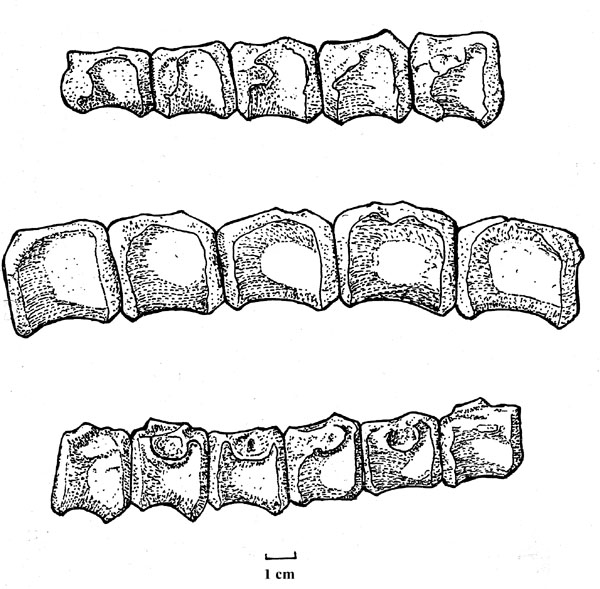
Species: curtonotus SEELEY, 1879
Etymology: Latin, curtus, "short" and Greek, noton, "back."
= Acanthopholis curtonotus (SEELEY, 1879) NOPCSA, 1902
= Anoplosaurus curtonodus COOMBS, 1971 (sic)
Lectotype: SMC B55731
Locality: From a phosphatitic-washing pit near Reach, Cambridge, Cambridgshire County, England, Southern United Kingdom.
Horizon: ?Upper Gault Clay or ?Cambridge Greensand.
Biostratigraphy:
Age: Late Albian Stage, Middle Gallic Subepoch, Upper Early Cretaceous Epoch, Early Cretaceous.
Material: A partial right scapula.

Paralectotypes: SMC B55670: Partial left dentary.
SMC B55671-55675: 5 cervical centra.
SMC B55676-55688: 13 dorsal centra.
SMC B55689-55694: Isolated neural arches.
SMC B55695-55695: Dorsal ribs.
SMC B55697-55709: Rib fragments.
SMC B55710-55715: 6 unfused sacral centra.
SMC B55716-55720: Sacral ribs.
SMC B55721-55728: 8 caudal centra.
SMC B55729-55730: Coracoids.
SMC B55732: Fragmentary humerus.
SMC B55733: ?Metacarpal.
SMC B55734-55735: Fragmentary left femur.
SMC B55736-55737: Fragmentary left tibia.
SMC B55738-55741? Metatarsals.
SMC B55742: Phalanx.
_____________________________________________________________________________________
Species: major SEELEY, 1879 (nomen dubium)
Etymology: Latin, major, "greater."
= Acanthopholis major (SEELEY, 1879) NOPCSA, 1902 (nomen dubium)
Holotype: Sedgwick Museum, SMC B55561
Locality: Near Cambridge, Cambridgeshire County, England, Southern United Kingdom.
Horizon: Cambridge Greensand.
Biostratigraphy:
Age: Late Albian Stage, Middle Gallic Subepoch, Upper Early Cretaceous Epoch, Early Cretaceous.
Material: Cervical vertebra.
Note: Ankylosaur incertae sedis, as per PEREDA-SUBERBIOLA & BARRETT, 1998